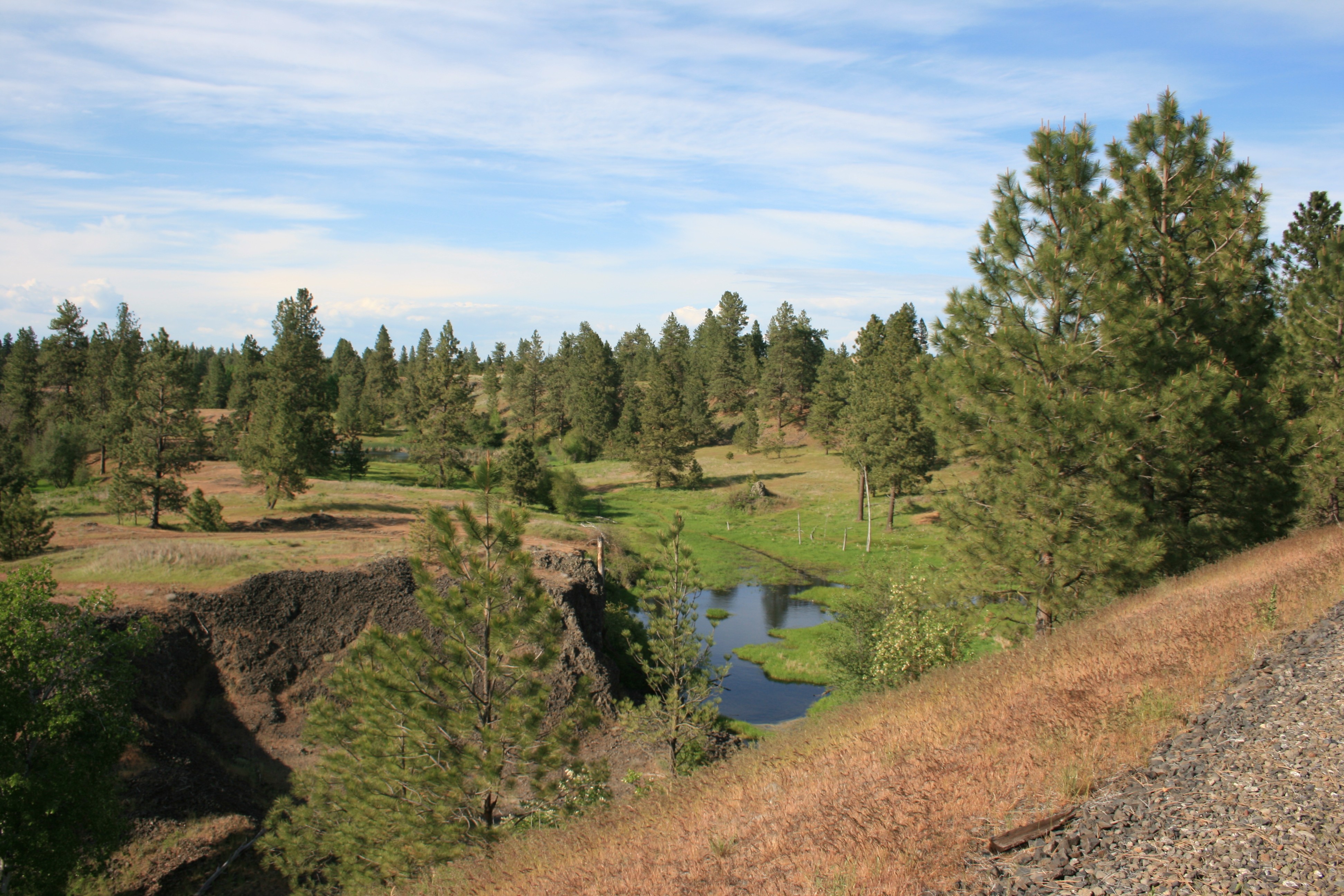- Turnbull National Wildlife Refuge
Infobox Protected area
name = Turnbull National Wildlife Refuge
iucn_category =

caption = The ecological transition between the dry, sagebrush dotted grasslands of the Columbia Basin up toward the timbered Selkirk and Bitterroot Mountains provides excellent wildlife habitat.
base_width = 300
locator_x =
locator_y =
location =
nearest_city =Cheney, Washington
lat_degrees= 47 |lat_minutes= 25 |lat_seconds= 23 |lat_direction= N
long_degrees= 117 |long_minutes= 33 |long_seconds= 59 |long_direction= W
area = convert|16000|acre|km2
established = 1937
visitation_num =
visitation_year =
governing_body =U.S. Fish & Wildlife Service
world_heritage_site =The Turnbull National Wildlife Refuge was established in 1937 by an Executive Order of PresidentFranklin D. Roosevelt is located six miles (10 km) south ofCheney, Washington on the eastern edge of theColumbia Basin , inSpokane County in northeasternWashington .Geology
The Refuge is situated within the
Channeled Scablands , an area formed 16,000 years ago byMissoula Floods during the last ice age. The powerful forces of the volcanism which formed theColumbia Plateau , glaciation and a series of large floods combined to form an environment unique in many respects. The combination of scablands, basalt outcrops, channeled canyons,ponderosa pine forests and meadows provide a diverse landscape with over 130 marshes, wetlands and lakes. The area provides a high quality wildlife habitat in an ecosystems that represents an ecological transition between the dry, sagebrush dotted grasslands of theColumbia Basin up toward the timberedSelkirk and Bitterroot Mountain Ranges that rise up to the east.Wildlife habitat
The Turnbull National Wildlife Refuge was established to provide productive breeding and nesting grounds for migratory birds and other wildlife, and it encompasses approximately 16,000 acres (65 km²) of the Channeled Scablands. The ecosystem that predominates the Refuge is unique within the
National Wildlife Refuge System and has characteristics that distinguish it from natural reserves worldwide. The 3,036 acres (12 km²) of wetlands on Turnbull NWR represent some of the last quality breeding habitat available in eastern Washington for waterfowl, which have experienced tremendous population declines across North America due to loss and degradation of breeding, migration and wintering habitat.Access
The
Columbia Plateau Trail provides access to the refuge.References
* [http://www.fws.gov/turnbull/ U.S. Fish & Wildlife Service web article]
External links
* Official site: [http://www.fws.gov/turnbull/index.html Turnbull National Wildlife Refuge]
Wikimedia Foundation. 2010.
